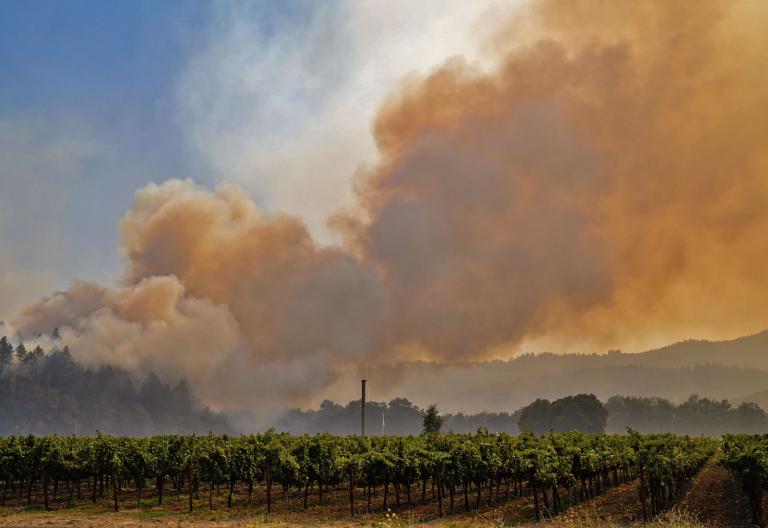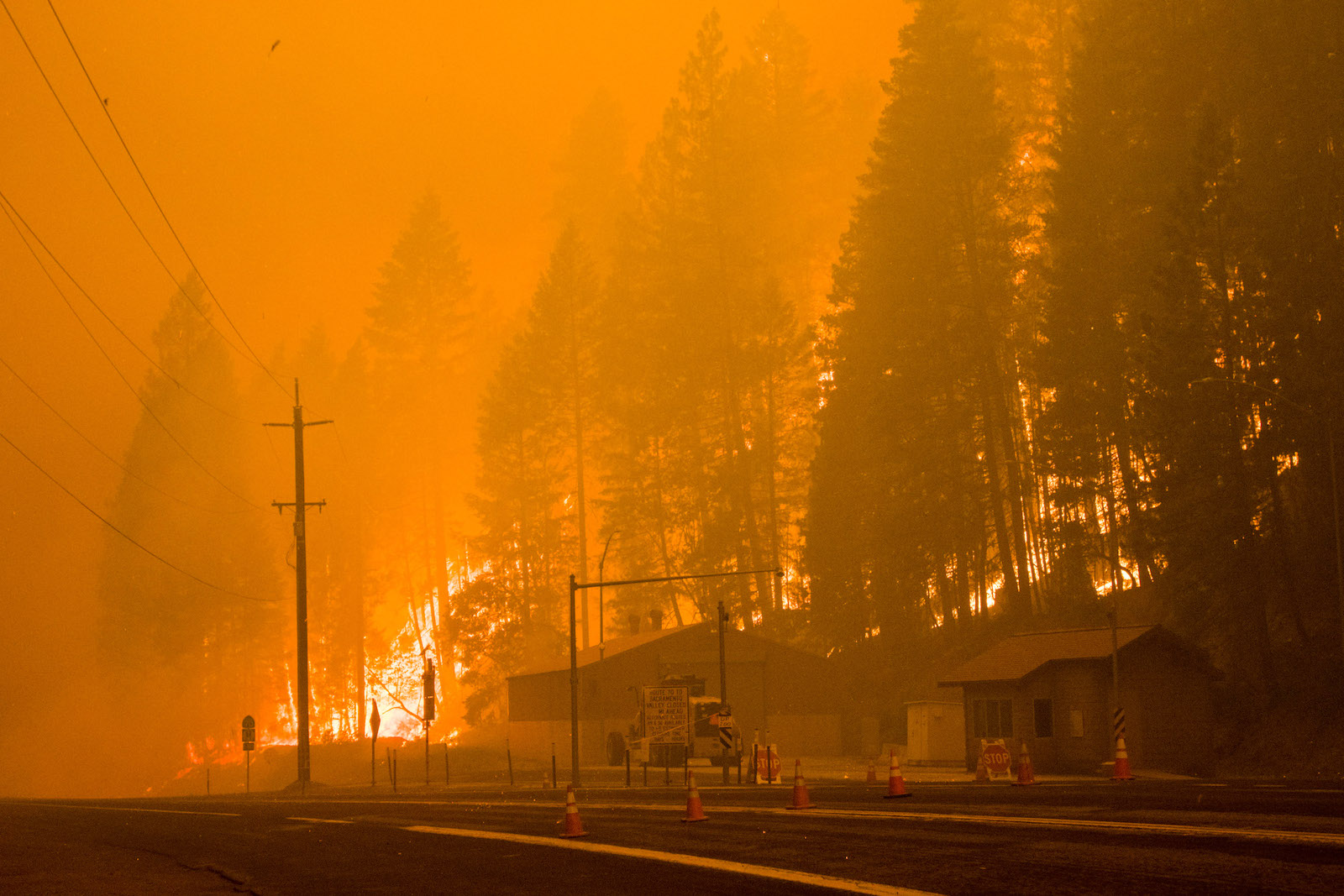Over the past decade, wildfires and extreme heat have destabilized California in ways both dramatic and subtle: 4.2 million acres burned last year alone, most of the state is experiencing emergency levels of drought, and heat-related deaths are on the rise. These climate-driven disasters have worsened the state’s housing crisis, as insurance in risky areas becomes unaffordable or unavailable entirely: California homeowners living in areas at high risk for wildfires have seen their premiums rise by as much as 500 percent.
For the past two years, the California Insurance Working Group, a team of environmental advocates, researchers, and insurance industry representatives, has been meeting at the behest of the state legislature to answer a set of particularly thorny questions about insurance coverage in the Golden State. Last week, the group released an 88-page report outlining a slew of recommendations to better protect Californians from wildfires, flooding, and extreme heat. The group’s recommendations include strengthening building standards to better withstand wildfires, encouraging the uptake of renters insurance, and better communicating climate-related risks to the public through maps and other tools. The report argues that these solutions will help narrow the state’s “protection gap” — the difference between the actual damage caused by a natural disaster and the insured losses.
Michael Peterson is a former legislative staffer who now works for the California Insurance Commission, heading the executive agency’s efforts on climate and sustainability. In a conversation with Grist, Peterson outlined the protection gap identified by the working group, argued that extreme heat should be recognized as a climate threat similar to hurricanes and wildfires, and made the case for limiting eligibility to the state’s insurer of last resort for wildfires. This interview has been condensed and edited for clarity.
Q. The report identifies an insurance “protection gap” in California. Could you explain what that is?
A. After every disaster, there’s a gap between the losses that are covered by insurance and losses that aren’t. And if you look at floods, fires, heat waves, you see a widening gap over time. The working group used that as one of the fundamental impetuses for this report, because if you have a widening gap, more and more costs are potentially going to fall on the most vulnerable communities. Over time, this working group was looking at general trends where between 30 and 60 percent of losses are not covered by an insurance policy. Those costs have to go somewhere, and they’re very likely landing on local governments and households that don’t have insurance.
Q. This gap is wider for communities of color: People of color are less likely to have insurance and also more likely to be hit by climate disasters.
A. That’s precisely right. There’s two factors: Where are the strongest climate impacts occurring, and what is the access to insurance available for those areas?
Q. It was interesting to me that the working group focused on extreme heat alongside wildfire and flooding. How did the group come to that decision?
A. The strong sentiment of the working group was that we need to be thinking about not just what’s insured today but what types of coverage and risk reduction we need looking forward. Extreme heat is deadly and causes more deaths than other perils. It’s also less recognized, so there are fewer systems in place. For large storms like hurricanes and tropical storms, we have early warning systems to help communities prepare. For wildfires, we have red flag days in California. But for extreme heat, even though we have the National Weather Service providing forecasts, there’s not quite the same response infrastructure already in place for local governments and communities that can help people anticipate these events. The working group saw it as an opportunity where their focus could have a strong impact on protecting people’s health and well being.
Q. The average person isn’t really thinking of extreme heat as a natural disaster the way they may think of hurricanes and wildfires. One of the main recommendations from the working group is to communicate the risks from extreme heat. Why is communication the first step?
A. If it’s not recognized as a type of natural disaster, then we’re just not adept at dealing with it, and that’s going to have drastic consequences. If you can communicate the risk effectively, then communities can prepare, they can react. That has a substantial benefit from what we see with fires and floods. Those early warning systems are really important. One of the recommendations is ranking heat waves to give people that singular event to plan for. But also, from a more scientific perspective, how do we learn from each of these events? It’s very hard — if you don’t categorize them — to say how can public policy be better next time, or what types of risk reduction policies can we do differently.
Q. Another recommendation was to create a risk pool, a type of fund that communities can draw from to handle extreme heat events. How would that work?
A. The reason why you want an extreme heat risk pool is that currently when we have extreme heat events, there are substantial costs that are being felt by local governments and communities. How do you provide them with the infusion of resources that they need to deal with the extra cost of cooling centers and transportation for elderly and people with disabilities to get to the cooling centers? If you have every local government dealing with this individually, it could make sense to have a pool that the state has that provides a more specific backstop to this problem.
Q. Would cities and counties contribute to that risk pool over time?
A. That’s a possibility. It could be the city and county, but it could also be state run. If you think about it, the state has response costs related to wildfires in terms of fighting wildfires and emergency response. So, this would be a more coordinated way to formalize how we respond to extreme heat events.
Q. The report recommends that the California legislature disallow eligibility for insurance coverage through the FAIR plan, which is the state’s insurer of last resort, for new construction in high hazard areas. (In recent years, the number of Californians enrolled in the FAIR program has ballooned as private insurance has become unavailable in risky areas.) How did the working group think about balancing insurance affordability while also not placing people in harm’s way?
A. The working group has land use recommendations because they came to the conclusion that where and how we build matters. One of the clearest ways to reduce future losses is by building better. That could mean stronger building standards in some areas or community planning. This recommendation is to provide the clearest incentive — it’s not a prohibition. For new developments, we really need to do community mitigation at the front end. That’s going to make them more sustainable moving forward. A home that may seem affordable when you purchase it, but the insurance may make it unaffordable over time. So that needs to be something that’s considered at the beginning. Community mitigation has to be strongly incentivized from the very beginning.
Q. Do you worry that if wildfire insurance becomes unavailable in certain parts of California, it might worsen the housing crisis?
A. The working group discussed this quite a bit and tried to come up with thoughtful and measured recommendations. Is a home that’s unaffordable because of insurance — and evacuation and risk of being burned down — is that an equitable solution? That’s the discussion that the legislature is going to have. There are a number of ways to try to address that, but really the pre-development mitigation planning is critical, and this group wanted to focus on that as much as possible. We want these communities to be able to understand the risks they’re getting into, to avoid situations where people are trapped in an unaffordable situation.



